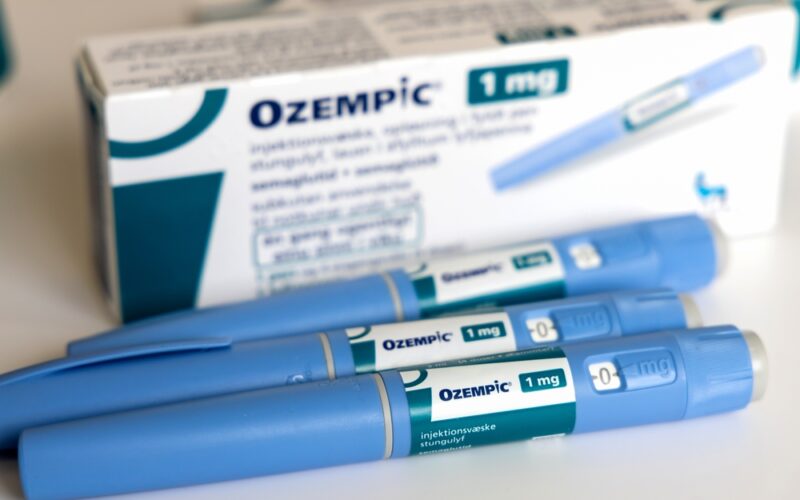Ozempic (semaglutide) is an FDA‑approved medication for type 2 diabetes. The Ozempic cost can range from under $30 with a copay card to over $1,000 per month without insurance. It’s important to understand your coverage, available discounts, and pharmacy options before starting therapy. The sections below keep the same headings you provided, expand each topic into full paragraphs, and include external, up‑to‑date sources.
What Does Ozempic Cost for Weight Loss
The Ozempic cost varies based on insurance coverage. Commercial plans define Ozempic as a diabetes drug, and not covering it when prescribed for weight loss, pushing patients toward the obesity‑specific FDA-approved brand Wegovy instead. Without coverage, list prices average $1,000–$1,200 for a four‑week supply in 2025, according to GoodRx retail data. By contrast, patients who meet insurance criteria and qualify for a manufacturer copay card may owe as little as $25 for a one‑, two‑, or three‑month fill.
Ozempic Cost With Insurance
If your health plan covers semaglutide for diabetes or weight loss, your final ozempic cost depends on the deductible you have met, the plan’s copay structure, and whether prior authorization is required. Some employer and marketplace policies classify Ozempic as a preferred‑brand medication, resulting in copays of $35–$100 once deductibles are satisfied. Others place it on a higher tier or deny coverage unless you first try older agents, raising patient responsibility to several hundred dollars a month. To estimate your share accurately, Novo Nordisk hosts an online estimator that pulls real‑time formulary data and displays a price range based on your specific plan. Confirm these figures with both your insurer and local pharmacy before filling the prescription.
Ozempic Cost Without Insurance
When you pay cash, the Ozempic cost reflects each pharmacy’s acquisition price plus its markup. Chain pharmacies advertising prices from about $960 at discount‑oriented retailers to nearly $1,200 at national chains, with independent pharmacies falling in between. Geographic variation matters as well: urban areas with numerous competitors may post lower cash prices than rural regions where choices are limited. Mail‑order pharmacies sometimes quote modest discounts, but shipping fees and delivery times can offset the savings.
Factors Impacting Ozempic Cost
Several intertwined factors shape out‑of‑pocket spending. First, location influences wholesale costs and allowable mark‑ups under state law, so neighboring states can display price gaps of $100 or more. Second, pharmacy contracts and PBM negotiations determine whether your plan receives a deep rebate that translates to lower copays. Third, insurance coverage rules dictate tier placement and prior‑authorization hurdles; Medicaid, for example, covers GLP‑1s for obesity in just 13 states as of late 2024, leaving many enrollees to pay cash or forego therapy. Finally, savings cards and patient‑assistance programs can slash monthly spend to $25 or even zero for qualified low‑income patients through Novo Nordisk’s PAP.
How to Save Money on Ozempic Injection Price
Patients exploring ways to cut the Ozempic cost often start with manufacturer savings. Commercially insured individuals who use the Ozempic Savings Card may reduce their copay to $25 for up to forty‑eight months if the drug is on formulary. Those without coverage can still lower expenses by comparison‑shopping across local and mail‑order pharmacies; potential differences of more than $150 per month between outlets only a few miles apart.
Lower the Cost of Ozempic per Month With Heally
Heally connects you with licensed healthcare providers through convenient virtual visits. It helps you explore legitimate options for FDA‑approved medications like Ozempic for type 2 diabetes. The service can also review savings programs, insurance coverage, and pharmacy options to help lower your monthly out‑of‑pocket cost safely and legally. Schedule a consultation with Heally today to discuss your treatment needs and cost‑saving options.
Sources
KFF: Medicaid Coverage of and Spending on GLP-1s
GoodRx: Ozempic
NovoCare: Request or activate your Ozempic® Savings Offer
National Library of Medicine: Factors Influencing Affordability
NovoCare: Patient Assistance Program
Important Medical Information and Disclaimers
MEDICAL DISCLAIMER: This article provides educational information and does not give medical advice. Ozempic (semaglutide) treats type 2 diabetes with FDA approval, and Wegovy (semaglutide) treats chronic weight management with FDA approval. Consult a qualified healthcare professional before you start or switch medications.
INDIVIDUAL RESULTS VARY: Insurance coverage, drug cost, and clinical outcomes differ. Plan rules, geographic location, pharmacy pricing, and personal health conditions all affect these factors.
SAFETY INFORMATION: Common side effects include nausea, vomiting, diarrhea, constipation, abdominal pain, decreased appetite, headache, and fatigue. Serious risks may include pancreatitis, gallbladder disease, acute kidney injury, and severe gastrointestinal issues. The FDA requires a boxed warning about thyroid C‑cell tumors. People with a personal or family history of medullary thyroid carcinoma or MEN 2 should not use semaglutide.
COMPOUNDED PRODUCTS WARNING: The FDA cautions that compounded semaglutide has not been evaluated for safety, efficacy, or quality and should not replace FDA‑approved medication.
FDA ADVERSE‑EVENT REPORTING: Report suspected side effects to MedWatch at 1‑800‑FDA‑1088 or www.fda.gov/medwatch.
Book Free Consultation

